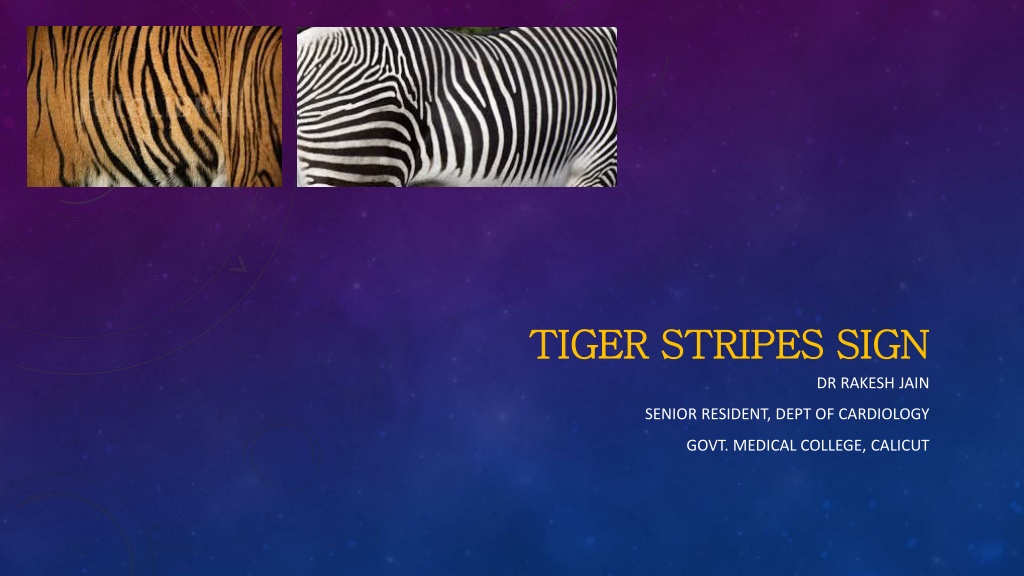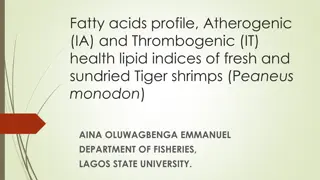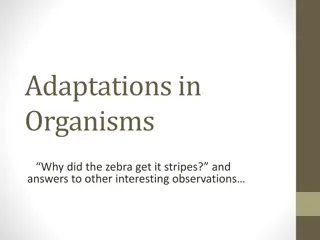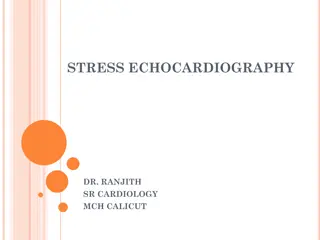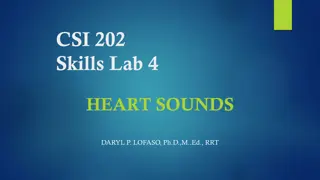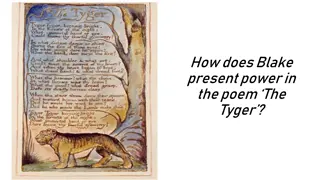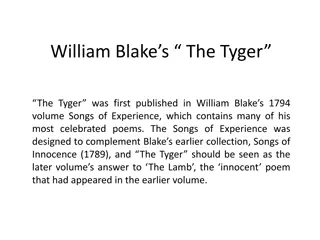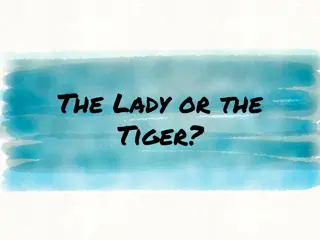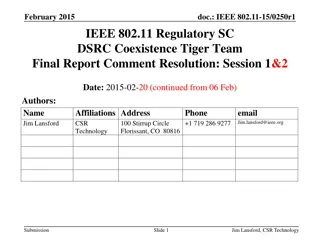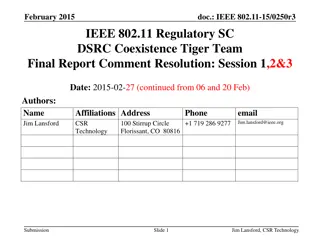Understanding Tiger Stripes Sign in Cardiology
Tiger Stripes Sign, also known as Zebra Stripes Appearance, is a unique Doppler signal observed in cardiac imaging, commonly associated with valvular regurgitation. It is characterized by high-amplitude band-like signals and may indicate complications like flail prosthetic valves. The mechanism behind this sign involves the fluttering of disrupted cusps, leading to the shedding of vortices. While typically seen in prosthetic mitral valves, it can also occur in other scenarios involving cusp flutter. Doppler signals resembling tiger stripes can be found in various valve dysfunctions. This distinctive sign serves as a valuable indicator in diagnosing and managing cardiac conditions.
Download Presentation

Please find below an Image/Link to download the presentation.
The content on the website is provided AS IS for your information and personal use only. It may not be sold, licensed, or shared on other websites without obtaining consent from the author. Download presentation by click this link. If you encounter any issues during the download, it is possible that the publisher has removed the file from their server.
E N D
Presentation Transcript
TIGER STRIPES SIGN TIGER STRIPES SIGN DR RAKESH JAIN SENIOR RESIDENT, DEPT OF CARDIOLOGY GOVT. MEDICAL COLLEGE, CALICUT
TIGER STRIPES / ZEBRA STRIPES APPEARANCE High amplitude band like signal (usually mottled in appearance), noted on Doppler spectral recordings (on both pulsed and continuous waveforms) May occur with any intracardiac oscillating structures Associated with valvular regurgitation, most often noted with flail porcine mitral prosthetic valves (tissue valve) and may be indicative of an acute flail prosthetic leaflet Edmund Kenneth Kerut. ECHOCARDIOGRAPHY, Volume 24, May 2007
An unusual band like signal noted on the pulse wave Doppler recording of a patient with moderate native valve aortic regurgitation Tiger stripes noted in a pulsed wave Doppler recording of a flail porcine mitral leaflet
MECHANISM Not clear Caused by fluttering of the disrupted cusp leading to the shedding of families of vortices in both a retrograde and an orthograde direction. Number of striations in the signal is likely to be related to the frequency of oscillation of the cusp and the presence or absence of mottling to the pattern of shedding of the vortices.1 Intracardiac oscillating structure > structures vibrate with a single high frequency (not chaotic) with several harmonic overtones > tiger stripes > first band represent lowest frequency on the Doppler recording and representing its fundamental frequency.2 1. John B Chambers et al J Am Coil Cardiol 1987;10:462-6 2. Edmund Kenneth Kerut. ECHOCARDIOGRAPHY, Volume 24, May 2007
SPECIFICITY OF THE SIGN ? Although flutter of the cusps of prosthetic mitral valves is most commonly reported in the presence of cusp tears and tiger stripes sign May also be seen in other situations Harrison et al. 1 and Jacovella et al. reported a small number of patients with diastolic flutter in the presence of paraprosthetic leaks and normal cusps. Hatle and Angelsen2 presented a brief description of findings similar to tiger stripes sign in native mitral and aortic valves but without a pathologic correlation. It is possible that Doppler signals resembling tiger stripes may be found in any situation in which flutter of one or a part of one cusp occurs in the presence of normal motion of the other parts of the valve 1.Jacovella G, Narducci C, Pino PG, Salati A. Echocardiographic features of porcine valve dysfunction. Am J Cardiol 1980;46:526. 2. Halle L, Angelsen B. Doppler Ultrasound in Cardiology. Philadelphia: Lea & Febiger, 1985:278.
